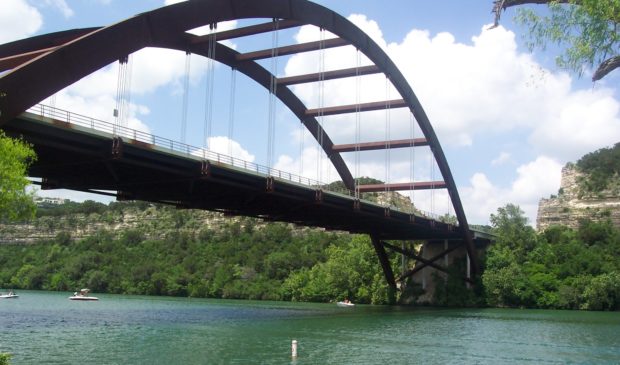Austin Water lays the path forward for the next 100 years of water conservation
Monday, August 6, 2018 by
Jessi Devenyns There’s no denying it: The climate as we know it is changing, but access to water sources is not.
Three years ago the second iteration of the Water Forward Task Force convened in an effort to draft a 100-year water supply plan and shift the way the city thinks about its water resources.
The task force presented their draft plan to the Environmental Commission on Aug. 1. Overall, the idea boils down to “We’re using water in a more decentralized fashion so we’re meeting needs where they’re needed,” said Sarah Richards, a task force member.
Right now, she explained, the Colorado River is Austin’s sole source of drinking water and the city is entitled to 325,000 acre-feet of water annually through LCRA water rights that they purchased in 1999. However, just because the city has access on paper doesn’t mean it will always be available. Austin uses approximately 149,000 acre-feet of water annually, and although we can ramp that up to 325,000 acre-feet, once the city consumes more than 201,000 acre-feet the prices will skyrocket.
“We’re going to reach demand and we’re not going to have these (water forward) things in place and it’s going to be a disaster,” explained Teresa Lutes, a managing engineer with Austin Water.
The Water Forward plan, as it stands, addresses water storage problems and how to use nonpotable water for water needs outside of drinking. The plan is built around four key tenets: water supply reliability, conservation of resources, environmental stewardship, and cost.
One of the big ways that the task force concluded the city could accomplish their goals is by maximizing local water sources like A/C condensate, graywater, blackwater, rainwater and stormwater. Of course, capturing water through Austin’s cityscape will require storage options that will represent a significant expense – like aquifer storage and recovery – but that, according to the task force, will ensure more sustainable access to water for longer periods.
“There are certain things we are going to have to do to achieve our bold recommendations,” said Lutes.
These recommendations were developed in tandem with the community and reflect their values and concerns. Similarly, the commission was pleased with this “visionary” plan, but they expressed concern with the timeline. According to the plan, which has timelines that will be updated every five years, the suggested major water storage and recovery projects will not begin for at least a decade.
“These timelines are like we’re on a donkey and we’re moving forward really carefully,” noted Commission Chair Linda Guerrero. “It’s time to get moving in the right direction for Austin.”
Those who came to speak from the public agreed, explaining that with the quantity of PUDs that are being built, it would behoove the city to mandate some of the water budgeting as soon as possible so that they could begin to reap the benefits now without having to re-outfit buildings later at further expense.
“I really think we should be building climate resilience … now while this growth is happening,” said David Foster, who was speaking on behalf of Clean Water Action.
Angela Richter with the Save Barton Creek Association agreed, saying, “In my mind, it shouldn’t take 10 years to get an ordinance.”
However, Marisa Flores Gonzalez, the project manager for the Water Forward plan, explained that the slow timeline will allow the city to develop equitable and adaptive solutions that will be tested first on smaller populations before they are rolled out to the city as a whole. That, she explained, will help “avoid unforeseen consequences.”
Both Gonzalez and Lutes assured the commission that this draft of the plan is a living document and they are still accepting input. Draft four will be released on Aug. 24.
Photo by CQui [CC BY-SA 2.5], from Wikimedia Commons.
The Austin Monitor’s work is made possible by donations from the community. Though our reporting covers donors from time to time, we are careful to keep business and editorial efforts separate while maintaining transparency. A complete list of donors is available here, and our code of ethics is explained here.
You're a community leader
And we’re honored you look to us for serious, in-depth news. You know a strong community needs local and dedicated watchdog reporting. We’re here for you and that won’t change. Now will you take the powerful next step and support our nonprofit news organization?








